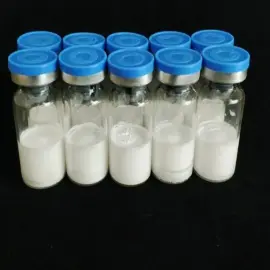-
Categories
-
Pharmaceutical Intermediates
-
Active Pharmaceutical Ingredients
-
Food Additives
- Industrial Coatings
- Agrochemicals
- Dyes and Pigments
- Surfactant
- Flavors and Fragrances
- Chemical Reagents
- Catalyst and Auxiliary
- Natural Products
- Inorganic Chemistry
-
Organic Chemistry
-
Biochemical Engineering
- Analytical Chemistry
-
Cosmetic Ingredient
- Water Treatment Chemical
-
Pharmaceutical Intermediates
Promotion
ECHEMI Mall
Wholesale
Weekly Price
Exhibition
News
-
Trade Service
The Safety of Diltiazem in the Chemical Industry: A Comprehensive Overview
Diltiazem is a calcium channel blocker drug that is commonly used in the treatment of hypertension, angina, and certain heart rhythm disorders.
It is also used as a research chemical in the chemical industry due to its unique properties.
However, the use of diltiazem in the chemical industry is often associated with concerns regarding its safety.
This article aims to provide a comprehensive overview of the safety of diltiazem in the chemical industry.
- What is Diltiazem?
Diltiazem is a pharmaceutical drug that is commonly used in the treatment of cardiovascular disorders.
It works by relaxing the smooth muscle of the blood vessels, which allows the blood to flow more easily and reduces blood pressure.
It is also used to treat certain types of heart rhythm disorders.
Diltiazem is a calcium channel blocker drug, which means it prevents the entry of calcium ions into the smooth muscle cells of the heart and blood vessels.
- Uses of Diltiazem in the Chemical Industry
Diltiazem is used in the chemical industry due to its unique properties.
It is used as a research chemical in various applications, including:
- As a catalyst in the production of polyester resins, plastics, and other synthetic materials.
- As a stabilizer in the production of explosives.
- As a flame retardant in the production of chemicals, plastics, and textiles.
- As an optical brightener in the production of detergents and other cleaning products.
- Risks and Concerns of Diltiazem Use in the Chemical Industry
The use of diltiazem in the chemical industry is associated with several risks and concerns regarding its safety.
These include:
- Health hazards for workers: Diltiazem is a potent drug that can cause serious health hazards for workers who handle it during the manufacturing process.
Prolonged exposure to the drug can cause side effects such as headaches, dizziness, and heart palpitations.
In severe cases, it can lead to cardiac arrest. - Environmental pollution: Diltiazem is a toxic chemical that can pollute the environment if not disposed of properly.
It can contaminate soil, water sources, and air, causing harm to living organisms. - Regulatory compliance: The use of diltiazem in the chemical industry is subject to strict regulations, and companies must comply with safety guidelines to avoid legal liabilities.
Failure to comply with regulations can lead to costly fines and legal penalties.
- Safety Measures for Diltiazem Use in the Chemical Industry
To ensure the safety of workers and the environment, several safety measures can be implemented when using diltiazem in the chemical industry.
These include:
- Proper handling and storage: Diltiazem should be stored in a cool, dry place and handled with caution to avoid exposure.
Workers should wear protective clothing, including gloves, goggles, and masks, when handling the drug. - Proper disposal: Diltiazem should be disposed of in accordance with local regulations to avoid environmental pollution.
This may involve neutralizing the chemical and disposing of it in a landfill or incinerator. - Training and education: Workers who handle diltiazem should receive proper training and education on its safe handling, storage, and disposal.
This will ensure that they are aware of the risks associated with the drug and can take the necessary precautions to avoid accidents. - Regular monitoring: Companies should regularly monitor workers who handle diltiazem to assess their health and ensure that they are not exposed to harmful levels of the drug.
This may involve conducting regular health checks and monitoring for side effects.
- Conclusion
Diltiazem is







